A
A cappella
A cappella refers to music performed without instrumental accompaniment, relying solely on vocal harmonies.
Accent
Accent indicates a stronger emphasis on a specific note or beat, adding rhythmic intensity to the music.
Arpeggio
Arpeggio is a musical technique where the notes of a chord are played in succession, creating a flowing effect.
A cappella is a style of music performed without instrumental accompaniment, relying solely on vocal harmonies. Originating from Italian church music, it emphasizes natural acoustics and vocal technique.
Historically, a cappella was used in religious settings, but it now spans genres like pop, jazz, and classical. The term itself means “in the manner of the chapel.”
This style highlights vocal precision, balance, and creativity, as singers mimic instrumental sounds. A cappella groups often perform intricate arrangements, showcasing vocal versatility.
It remains a beloved tradition, bridging ancient and modern musical expressions.
Accent refers to a stronger emphasis or stress on a specific note or beat in music, enhancing rhythmic definition and intensity.
It is often notated with a symbol (^) or a dot (.) above or below the note to indicate its prominence.
Accents can add emotional depth and structural clarity to a performance, guiding the listener’s attention.
They are commonly used in various genres to highlight rhythmic complexity or to convey expressive intent.
Proper use of accents is essential for maintaining the integrity of a composition’s style and emotional impact.
An arpeggio is a musical technique where the notes of a chord are played in succession, rather than simultaneously.
This creates a flowing, broken chord effect, often used in piano, guitar, and harp music.
Arpeggios can be played in ascending or descending order, adding texture and harmonic richness to a piece.
They are commonly used in various genres, from classical to pop, to enhance melodic lines or rhythmic patterns.
The term originates from the Italian word arpeggiare, meaning “to play on a harp,” reflecting its historical association with harp music.
Arpeggios are versatile and can be performed in different tempos and dynamics, making them a foundational element in music composition and performance.
B
The Basso Continuo is a bass line with figured chords, guiding harmonic accompaniment in Baroque music. Bis means “twice” in French, requesting an encore. Bravo is an applause term for male performers.
Basso Continuo
The Basso Continuo is a foundational element in Baroque music, consisting of a bass line with figured chords. It provides harmonic and rhythmic guidance for the accompaniment, typically performed by a harpsichord, organ, lute, or bass violin. The figured bass notation indicates chords and intervals above the bass line, allowing performers to improvise harmonies. This technique was widely used in operas, oratorios, and instrumental music, offering a structured yet flexible harmonic framework. The continuo group often included multiple instruments, enriching the texture while maintaining the harmonic foundation of the piece.
Bis
Bis is a Latin term meaning “twice,” commonly used in musical and performance contexts. When an audience shouts “bis,” they are demanding an encore, asking the performer to repeat a piece or perform an additional one. This tradition is particularly prevalent in classical music, opera, and recitals. It reflects the audience’s appreciation and desire for more, often leading to spontaneous applause and extended performances. The term emphasizes the emotional connection between the performer and the audience, celebrating exceptional artistry and memorable moments on stage.
Bravo
Bravo is an Italian term meaning “good” or “well done,” commonly used to express admiration for a performance. Originating in opera and classical music, it is shouted by audiences to praise exceptional skill, artistry, or emotional delivery. Typically directed at male performers, the feminine form is “Brava” and the plural “Bravi” for groups. This term captures the essence of live performance, reflecting the audience’s spontaneous appreciation for outstanding talent and the emotional connection forged during a memorable show.
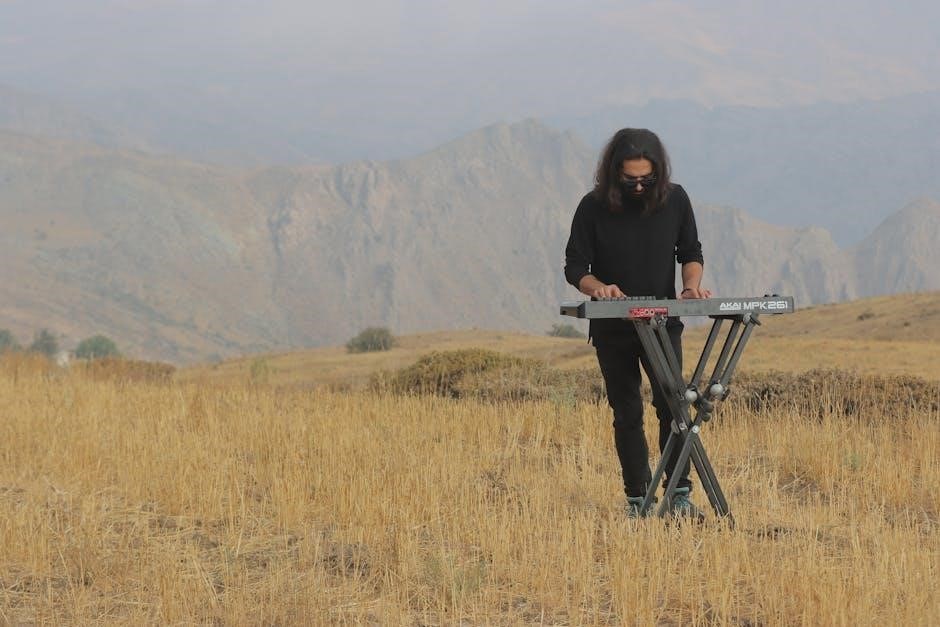
C
-
Cadenza
A virtuosic solo section, often improvised, showcasing technical skill.
-
Cantabile
A singing, lyrical style with a smooth, flowing quality.
-
Crescendo
A gradual increase in volume or intensity.

A cadenza is a virtuosic solo section, typically found in concerto movements, showcasing a performer’s technical mastery and artistic expression. Often improvised or composed, it highlights intricate passages and embellishments. Historically, cadenzas were common in Classical-era concertos, allowing soloists to demonstrate their skills. They usually occur near the end of a movement, providing a dramatic climax before the orchestral conclusion. While traditionally associated with instrumental music, vocal cadenzas also exist, particularly in opera. The cadenza remains a celebrated element in musical performance, blending spontaneity with structure to captivate audiences. Its execution demands both precision and creativity, making it a defining feature of virtuosic repertoire.
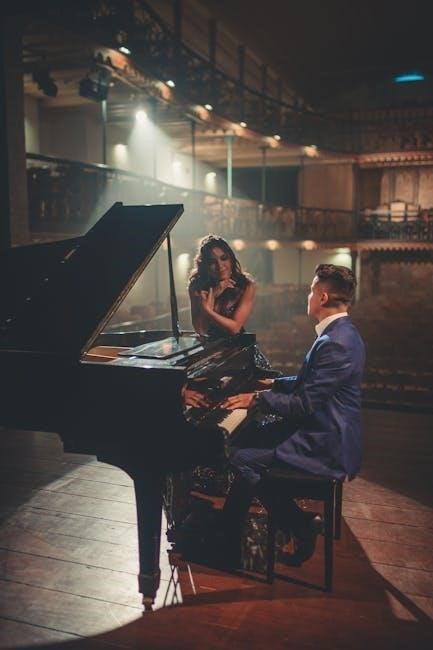
Cantabile is an Italian musical term meaning “singable” or “lyrical,” indicating a smooth, flowing, and expressive performance style. It is often used to direct musicians to play with a singing quality, emphasizing phrasing and dynamics. Commonly found in scores for vocal or instrumental pieces, cantabile encourages a natural, legato delivery, resembling the human voice. This term is particularly relevant in works requiring emotional depth, as it highlights the melodic line and promotes a sense of lyrical beauty. Its use ensures that the music flows gracefully, creating a warm and engaging auditory experience for the listener.
Crescendo, an Italian term meaning “growing” or “increasing,” is a musical direction indicating a gradual rise in volume or intensity. Notated with a long, curved or angled line under the notes, it signals performers to steadily increase the loudness over a specific passage. Crescendo can also imply an increase in tempo or emotional intensity, though its primary association is with dynamics. It creates a dramatic build-up, often leading to a climactic moment in the music. This term is widely used in various genres to enhance the expressive qualities of a composition and guide interpretive performances effectively.
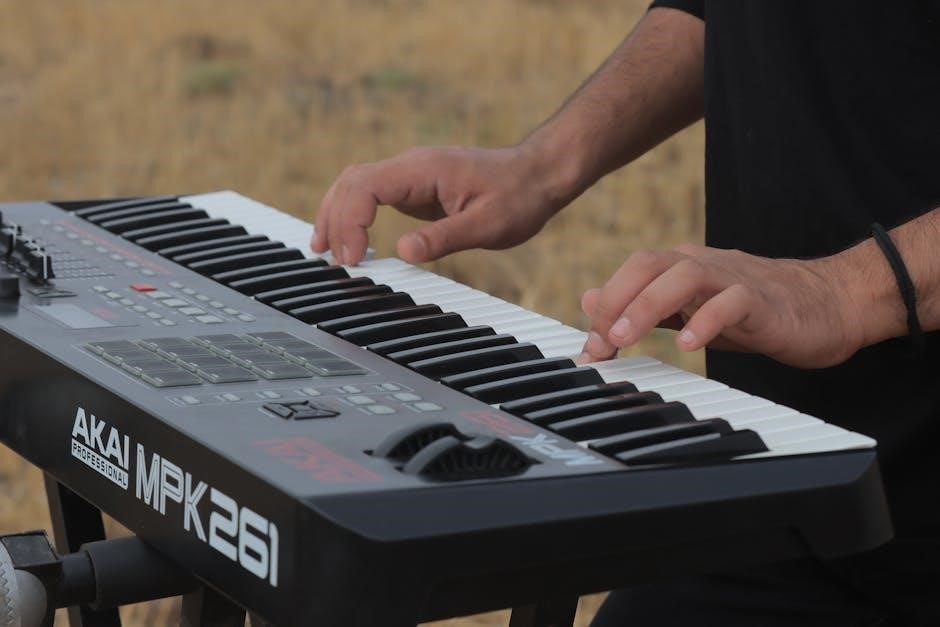
D
The section D covers key musical terms starting with the letter D, such as Da Capo, Decrescendo, and Dynamics, each explaining distinct musical concepts.
Da Capo
Da Capo (often abbreviated as D.C.) is an Italian musical term meaning “from the beginning.” It instructs performers to repeat a section of a piece starting from the beginning. This notation is commonly used in sheet music to indicate a return to the start, often followed by additional instructions like al Fine (to the end) or al Segno (to the sign). Da Capo is a concise way to guide repetition without rewriting the music, ensuring clarity and structure in performance. It is widely recognized in classical and contemporary music.
Decrescendo
Decrescendo (abbreviated as decres.) is an Italian musical term meaning “decreasing” or “gradually softer.” It instructs performers to reduce the volume of the music over a specific period. This dynamic marking is the opposite of crescendo . Decrescendo is often indicated by a diminishing sign (ʿ) in sheet music. It can create a dramatic or calming effect, depending on the context. Musicians must adjust their playing to achieve a smooth transition from louder to softer dynamics, ensuring the music flows naturally. This term is essential for conveying emotional depth in performances.
Dynamics
Dynamics refer to the varying degrees of loudness and softness in music, indicating how a piece should be played in terms of volume. Common dynamic markings include ff (very loud), f (loud), mf (moderately loud), mp (moderately soft), p (soft), and pp (very soft). Additional terms like sfz (sforzando, a sudden accent) or ppp (extremely soft) provide further nuance. Dynamics guide musicians in projecting emotion and creating contrast within a composition, making them essential for expressive performance and structural balance in music.
E
E stands for energy, emotion, and elegance in music. It encompasses various expressions, from the elevation of melodies to the essence of rhythm. E transforms performances.

Encore
An encore is an additional performance given by an artist or musician after the main show, typically in response to audience applause and demands for more. Originating from the French word meaning “again” or “once more,” encores are a way to extend the performance and satisfy the audience’s enthusiasm. They often involve repeating a popular piece or performing an extra, unplanned work. Encores are common in various musical genres and are seen as a celebration of the artist’s talent and the audience’s appreciation. They add a dynamic, interactive element to live performances.
Epitaph
An epitaph is a musical composition or piece written in memory of a person, often expressing mourning or tribute. It serves as a musical dedication, capturing the essence of the individual or their legacy. Epitaphs are frequently somber and reflective, evoking emotions that honor the deceased. In some cases, they are performed during funerals or memorial services. For example, Samuel Barber’s Adagio for Strings is often used as an epitaph due to its hauntingly beautiful and solemn nature. This term blends music with remembrance, creating a lasting auditory tribute.
Espiritu
Espiritu refers to a musical term of Spanish origin, meaning “spirit” or “animation.” It is used to indicate that a piece or section should be performed with a lively, spirited, or passionate feel. Composers may mark a passage con espiritu to convey energy and vitality, encouraging musicians to play with enthusiasm and emotional depth. This term often appears in Latin American music, guiding interpreters to infuse their performance with a sense of vibrancy and character. It contrasts with more subdued or reflective markings, emphasizing the dynamic and expressive qualities of the music.
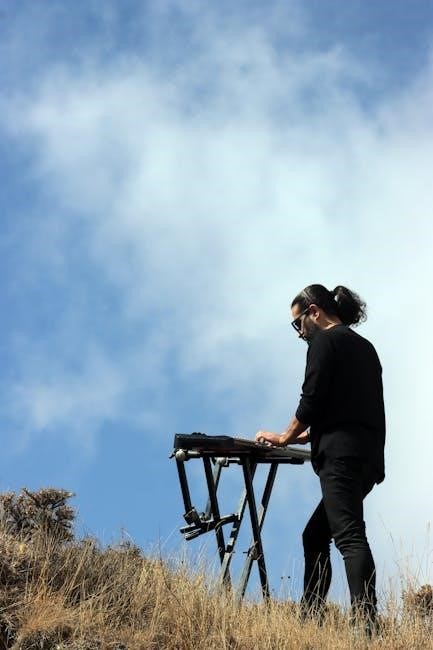
F
F encompasses key musical terms like Fermata (a held note), Forte (loud), and Fugue (a contrapuntal composition). These terms guide performance dynamics and structural complexity in music.
Fermata
A fermata is a musical symbol indicating a prolonged note or rest, often appearing as a dot with a stem or an eye-shaped mark. It instructs performers to hold the note or rest beyond its usual duration, adding dramatic or expressive emphasis. Fermatas are commonly used at the end of a piece or section to create a grand finale. They can also appear within a composition to add pauses for emotional effect. The length of a fermata is typically left to the performer’s discretion, though conductors may specify durations in ensemble settings. This symbol enhances musical interpretation and expression.
Forte
Forte (abbreviated as f) is a musical dynamic indicating a loud volume. It originates from the Italian word for “loud” or “strong.” In musical notation, it is placed above or below the staff to signal performers to play at a moderately loud level, typically mezzo-forte (moderately loud). Forte is often used to create contrast in dynamics, adding intensity and energy to a piece. It is frequently employed in orchestral and choral music to highlight climactic moments or emotional peaks, helping to shape the overall mood and structure of the composition. Forte enhances the expressive qualities of music.
Fugue
Fugue is a contrapuntal musical composition where a theme, known as the subject, is introduced and developed by multiple voices. It begins with the subject being presented in one voice, followed by its repetition in others at different pitches. The interweaving of these voices creates a complex yet harmonious structure. Often associated with Baroque music, fugues showcase technical mastery and musical ingenuity. Composers like J.S. Bach perfected the form, using it to explore thematic development and contrapuntal possibilities. Fugues can be simple or highly intricate, but they always emphasize thematic unity and contrapuntal sophistication.
The letter G in music encompasses various terms that describe techniques, styles, and expressions. Terms like glissando and groove highlight its versatility in musical terminology.
Glissando
A glissando is a musical technique where a musician slides between notes, creating a smooth, continuous sound. Often used in orchestral and jazz music, it adds a dramatic or playful effect.
Commonly used in string, brass, and vocal performances, glissando can be notated with a wavy line or the abbreviation “gliss.” Composers like Wagner and Ravel frequently employed this technique.
Glissando can evoke emotion or humor, depending on the context. It’s a versatile term that enhances musical expression, bridging the gap between notes in a way that captivates the listener.
Grazioso
Grazioso is an Italian musical term meaning “graceful” or “merry,” indicating a light, elegant, and playful style of performance. It often suggests a moderate tempo with a sense of charm and buoyancy.
Composers use grazioso to guide musicians in achieving a delicate, refined interpretation. It emphasizes smooth transitions and a carefree mood, often contrasting with more serious or dramatic sections.
This term is frequently found in classical and Baroque music, enhancing the emotional quality of a piece. By directing a graceful execution, grazioso adds depth and character to musical compositions.
Groove
Groove refers to the rhythmic feel or “pocket” in music, describing how instruments and rhythms align to create a cohesive, engaging musical foundation. It emphasizes the way musicians play with timing, feel, and syncopation to establish a strong, infectious beat.
A good groove is essential in genres like jazz, funk, and rock, where rhythm sections (bass, drums, and keyboards) work together to create a solid, danceable rhythm. It’s about playing “in the pocket,” where the music feels natural and consistent.
Groove can vary in intensity and style, from subtle to energetic, depending on the musical context. Achieving a great groove requires strong communication and timing among musicians, making it a key element in live performances and recordings.
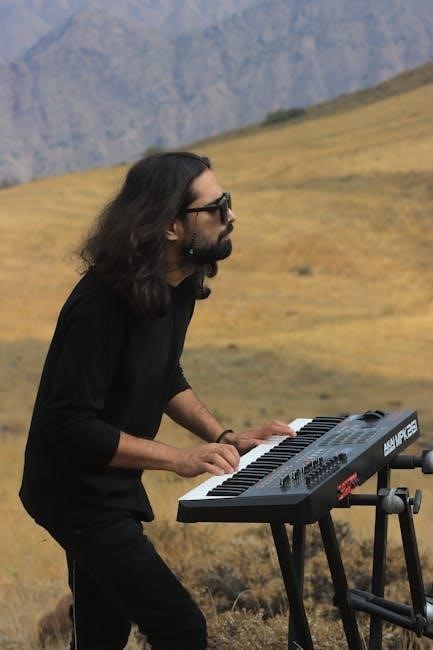
H
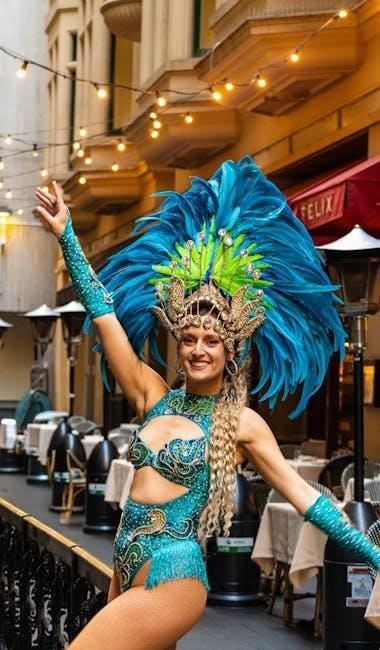
H encompasses musical terms like Harmony, Hemiola, and Hesitation, each contributing to rhythm, structure, and emotional depth in compositions, enhancing the overall musical experience.
Harmony
Harmony refers to the combination of multiple pitches sounding simultaneously in music, creating a cohesive and structured sound. It involves the arrangement of chords and intervals that complement the melody, adding depth and emotional resonance. Harmony can be vertical (chords) or horizontal (interweaving melodies) and is fundamental to Western music. It enhances the overall musical experience by providing complexity and texture, allowing composers to evoke specific moods and emotions. Proper use of harmony is essential for creating balanced and engaging compositions.
Hemiola

Hemiola is a musical rhythmic pattern where three notes are played in the time typically occupied by two, creating a rhythmic effect often described as a “triplet” or “hemiola rhythm.” This technique alters the meter’s feel without changing the tempo. Originating from the Greek word for “one and a half,” hemiola is commonly used in Baroque music, particularly in compositions by Bach. It adds complexity and interest to a musical phrase, often used in triple meter to create a sense of forward motion or tension. Hemiola is also employed in homophonic music to add rhythmic contrast, and its emotional impact varies depending on the context in which it is used. This technique remains popular in various genres, including jazz and Latin music, for its unique rhythmic variety.
Hesitation
Hesitation in music refers to a slight rhythmic delay or pause, often used for emotional effect. It is not a formal notation but rather a performance practice, particularly in early music. This technique allows performers to add subtle expressive nuances, creating a sense of uncertainty or drama. Hesitation is commonly associated with phrasing in Baroque and Classical music, where it enhances the interpretive quality of a melody. While not widely used in modern notation, it remains a recognized concept in musical interpretation, offering performers creative freedom to shape the music’s emotional impact.
I
The section covers musical terms starting with “I,” including Interval, Isorhythm, and Italian Tempo, each explaining unique musical concepts related to pitch, rhythm, and tempo in compositions.
Interval
An interval in music is the distance between two pitches, measured in whole and half steps. It can be harmonic (played simultaneously) or melodic (played successively). Intervals are classified by quality (major, minor, perfect, diminished) and size (unison, second, third, etc.). They form the foundation of scales, chords, and melodies, shaping the harmonic structure of compositions. Understanding intervals is essential for musicians to analyze and create music effectively, as they convey emotional depth and complexity. For example, a major third interval spans four semitones, like C to E.
Isorhythm
Isorhythm is a musical technique where a rhythmic pattern is repeated at different pitches, often in a fixed interval. Originating in medieval music, it involves the repetition of a rhythmic figure (talea) over a recurring sequence of pitches (color). This creates a complex interplay between rhythm and pitch. Isorhythm was widely used in works by composers like Guillaume de Machaut and is characterized by its structured, mathematically derived patterns. It adds depth and interest to compositions, blending order with creativity. This technique remains a fascinating aspect of musical composition and analysis.
Italian Tempo
Italian Tempo refers to the traditional system of tempo markings in music, often indicated by Italian words. These terms, such as allegro, adagio, and presto, describe specific tempos and moods. Originating in the Baroque era, they provide clear guidelines for performers. For example, allegro signifies a fast, lively pace, while largo indicates a slow, solemn tempo. These markings are essential in classical and operatic music, helping to convey the composer’s intent. Over time, their interpretations have evolved, but they remain a cornerstone of musical expression and communication.
